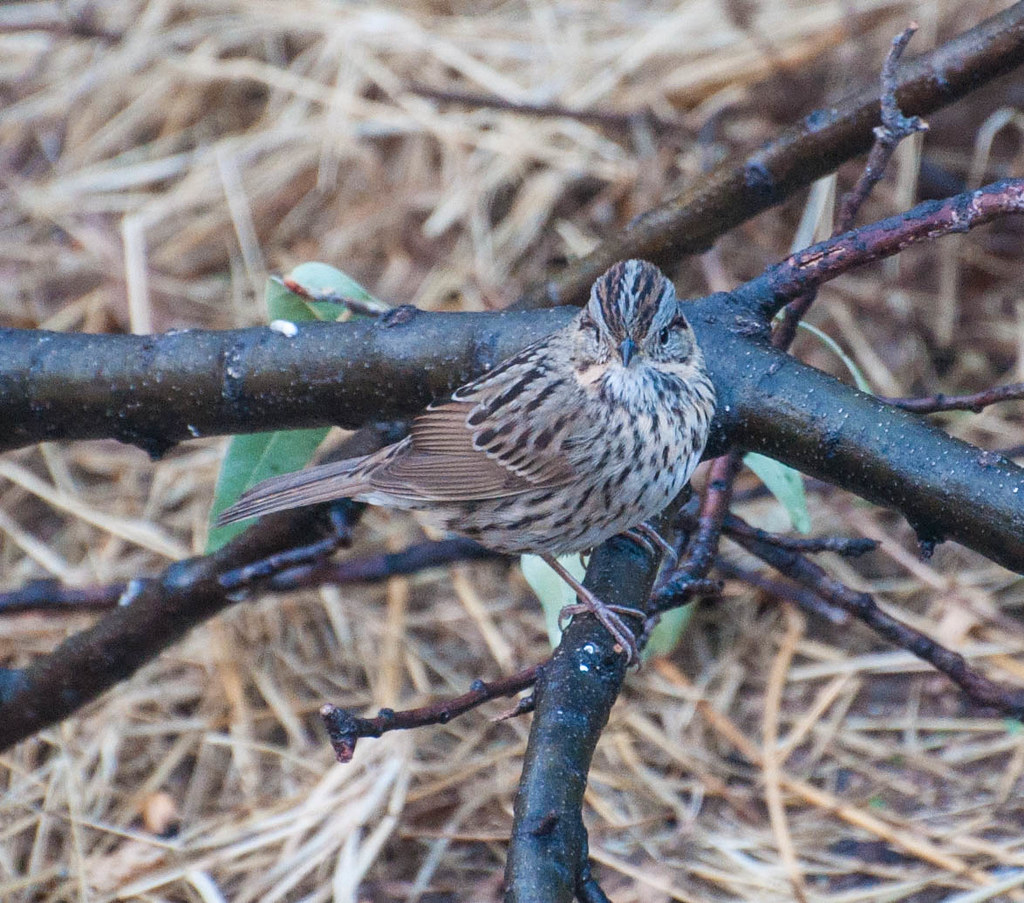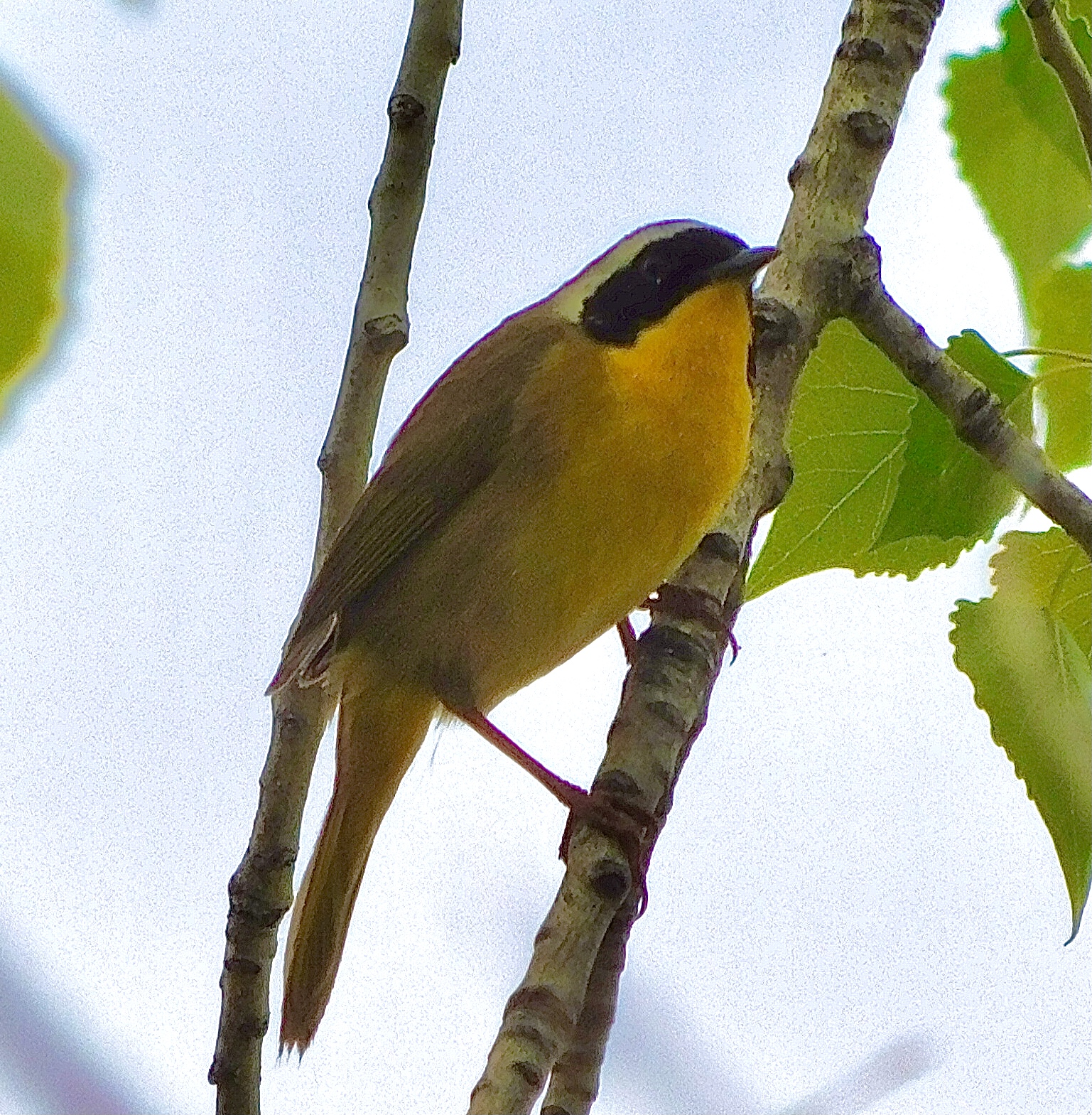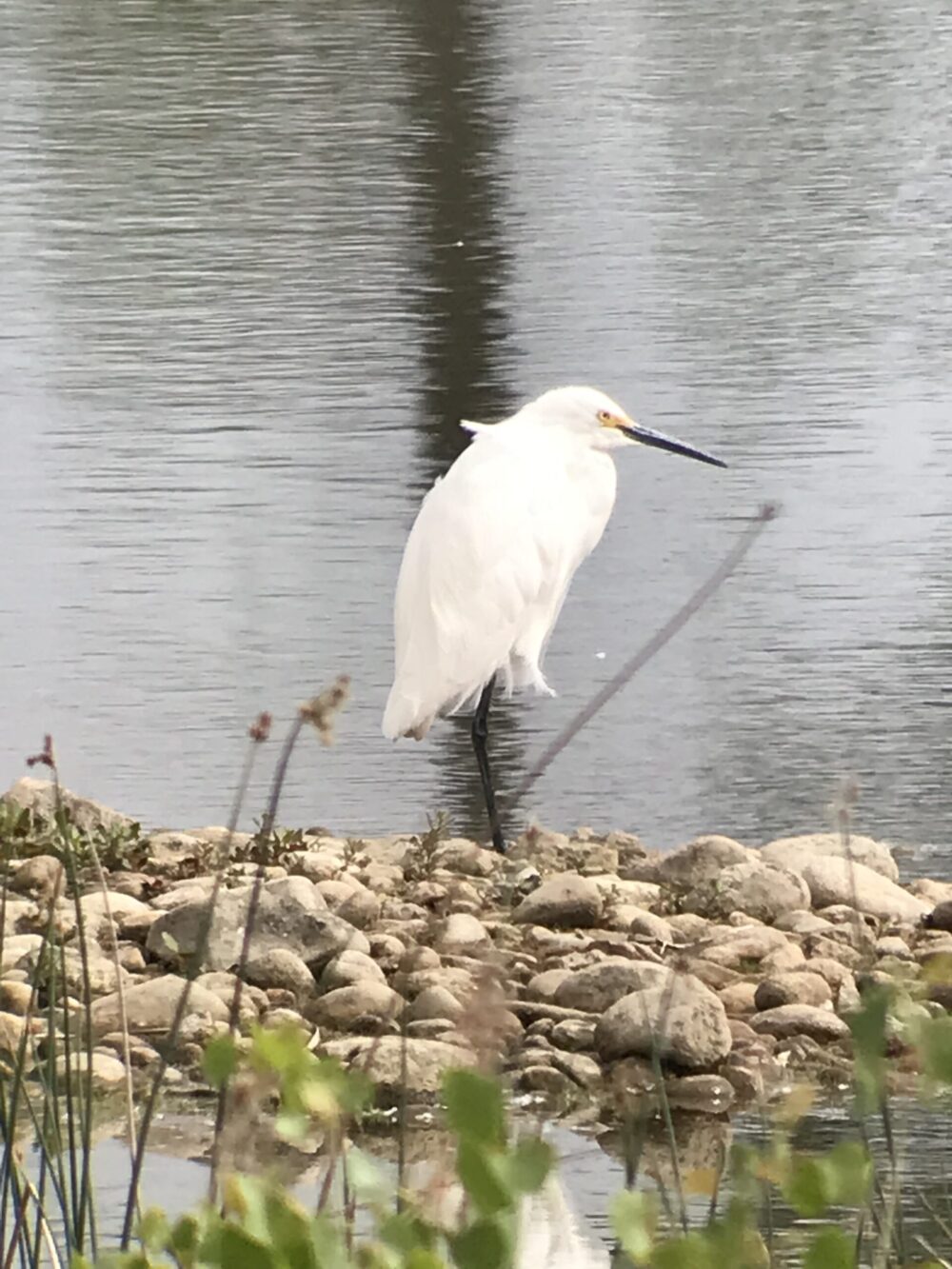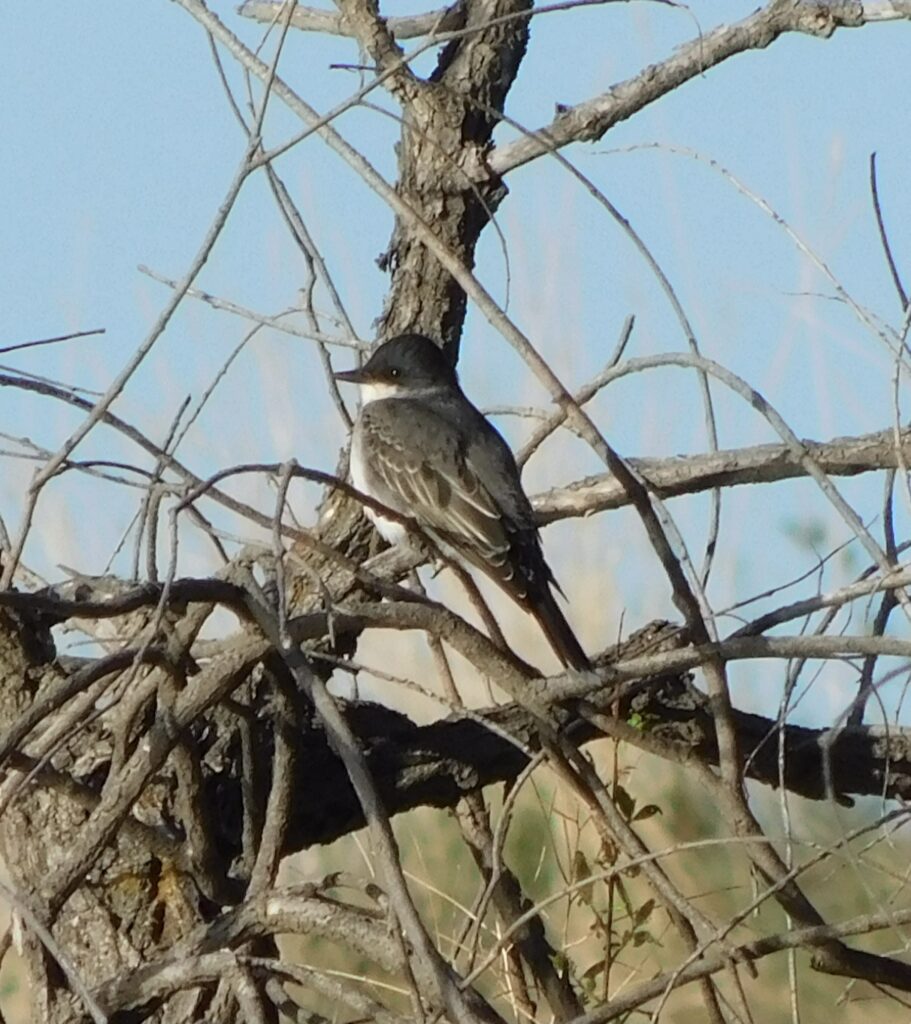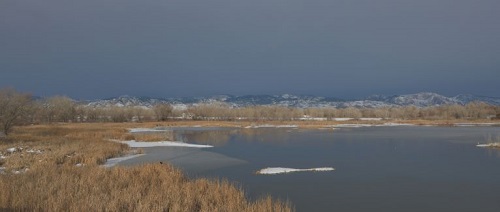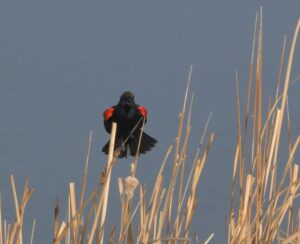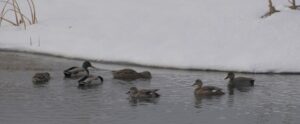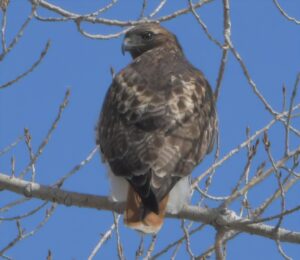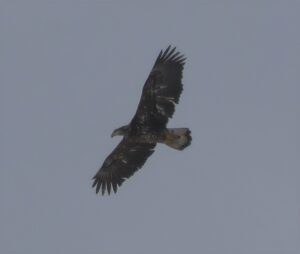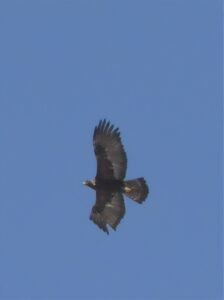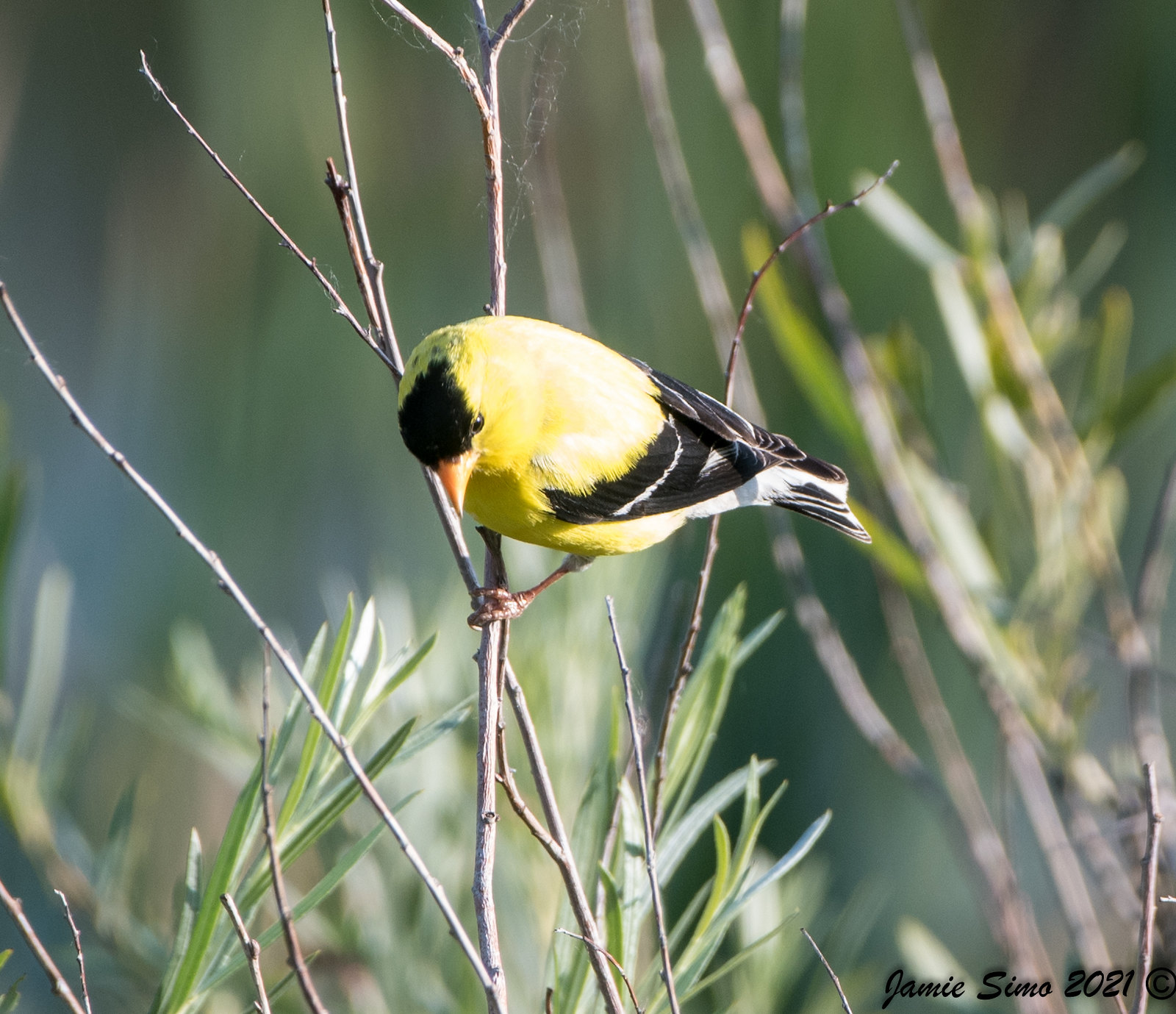
The bird walk on Saturday, April 8, at Sawhill Ponds was a great one! The weather was a perfect 60 degrees with minimal wind, which was quite the change from the snowstorm earlier this week. With the ponds thawed out and migration beginning to get underway, 10 birders joined the walk and were excited to see what they could find.
It didn’t take long for us to find some of our first target birds for the day. A pair of Ospreys that nest at the park were flying around the parking lot. One of them ended up catching a fish, which they proceeded to eat on top of one of the utility poles. As we watched, an adult Bald Eagle swooped in quickly to attempt to steal the fish! The Osprey was able to get away, while we marvelled at the aerial battle taking place.
All throughout the walk, we could hear Red-winged Blackbirds and Song Sparrows singing to establish their territories amongst the cattails. Only male Red-winged Blackbirds were spotted, so the females were either hidden amongst the cattails creating their nests or haven’t quite started migrating back yet. A pair of Killdeer were seen flying overhead, while the sounds of drumming woodpeckers, such as Northern Flickers, Downy Woodpecker, and Hairy Woodpecker, could be heard throughout our walk.
Waterfowl were plentiful throughout the various ponds, with Green-winged Teals, Gadwalls, and Ring-necked Ducks being the most common. Hooded Mergansers, Northern Shovelers, American Wigeons, and Mallards were also seen, while a pair of Blue-winged Teals were a joy to see. The ubiquitous Canada Goose was also seen throughout the park, with one particular bird having already established a nest on an island in one of the ponds.
The smaller songbirds were also very active. We enjoyed seeing American Goldfinches in their bright yellow, breeding plumages, while the Black-capped Chickadees were very active throughout the area. One flock of chickadees seemed to be following us around, and their calls and active habits were a joy to watch. We were also able to spot an uncommon bird for the area. While we watched for birds along Boulder Creek, one of our birders spotted a small passerine hopping around on the bank. We determined it was a Lincoln’s Sparrow by their finely streaked buffy breasts feathers and slender bill. Lincoln’s Sparrow typically are only passing through the area on their way to higher elevations to breed.
As we finished our walk, we spied a Northern Flicker poking their head out of a cavity nest. Northern Flickers often have to contend with the invasive European Starling for nesting space and are usually bested by the latter, so it was nice to see that this one was claiming this cavity as their own. At the end, we finally spied a Belted Kingfisher perched high up on the power line, which was a nice end to the walk. All in all, a great day to kickoff the spring birding!
Taxa Reported: 35
32 Canada Goose
2 Blue-winged Teal
8 Northern Shoveler
20 Gadwall
2 American Wigeon
8 Mallard
16 Green-winged Teal
10 Ring-necked Duck
2 Hooded Merganser
9 Rock Pigeon
2 Mourning Dove
2 American Coot
2 Killdeer
2 Greater Yellowlegs
7 Double-crested Cormorant
3 Great Blue Heron
2 Osprey
1 Bald Eagle
1 Red-tailed Hawk
1 Belted Kingfisher
4 Downy Woodpecker
1 Hairy Woodpecker
4 Northern Flicker
2 Blue Jay
5 American Crow
10 Black-capped Chickadee
1 White-breasted Nuthatch
6 European Starling
18 American Robin
9 American Goldfinch
4 Song Sparrow
1 Lincoln’s Sparrow
1 Spotted Towhee
36 Red-winged Blackbird
2 Common Grackle



